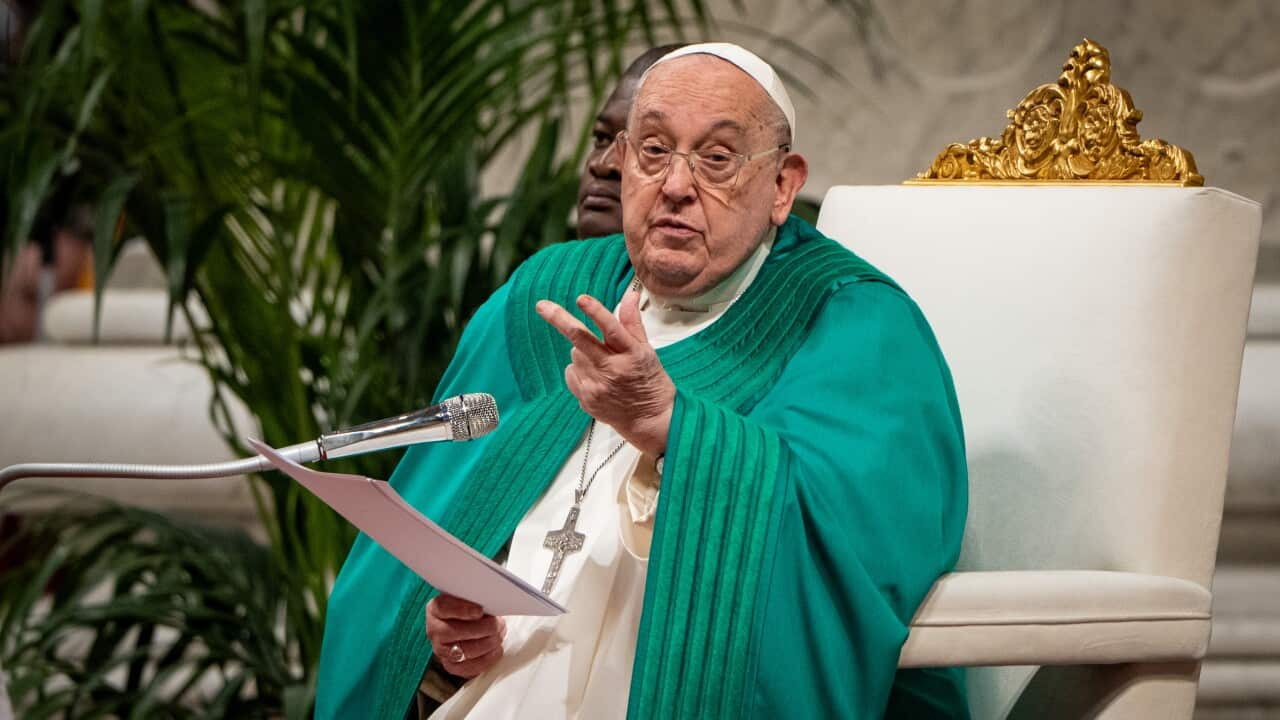Key Points
- Pope Francis' health is in a 'critical' condition.
- When he dies a nine-day mourning period will be declared.
- The church's cardinals will have to vote continuously for a new pope.
With Pope Francis reported to be, the Catholic church will be preparing for a set of elaborate and ancient rituals in the event of the 88-year-old's death.
The Vatican said on Saturday that Pope Francis' health had deteriorated over the past 24 hours and for the first time described his condition as "critical", reporting he had needed supplemental oxygen and blood transfusions.
The Pope was admitted to Rome's Gemelli hospital on February 14 after experiencing difficulty breathing for several days, and was subsequently diagnosed with pneumonia in both lungs.
Francis had suffered a "prolonged asthma-like respiratory crisis" during the morning that had required the administration of "high-flow oxygen", the Vatican said in a statement.
"The Holy Father's condition remains critical," the statement said. "The Pope is not out of danger."
READ MORE

Pope Francis: quick facts
The Vatican has a complicated set of succession protocols for when the pope dies, and eventually will have to elect a new pope in a secretive voting ritual called a conclave.
These have been practised over centuries and some date back to ancient Rome.
The pope's funeral process
The pope's death would be confirmed by medical professionals, though tradition also dictates it needs to be confirmed by a senior Vatican official called a camerlengo.
The camerlengo is supposed to call out the pope's name and try to rouse him and confirm the death when there is no response.
Then, the pope's signet ring he uses to sign and seal documents is supposed to be destroyed, as his reign as head of one of the world's largest religions is over.
Francis' death would trigger a nine-day mourning period called the Novendiale.
His body would be embalmed, dressed and on public display at St. Peter's Basilica, where world leaders and hundreds of thousands of members of the public are expected to pay tribute.
Daily prayer services and masses will be held in Catholic churches across the world.
The funeral would likely be held between four and six days after his death.
The pope approved funeral protocols for himself last year, opting to cut some of the papal funeral traditions and simplify some rituals.
Francis said in 2023 he would like to be buried at the Santa Maria Maggiore basilica in Rome, departing from the tradition of almost 100 popes who chose to be buried in the Vatican Grottoes.
Past popes have been buried in three-layered coffins, but Francis has chosen to have a single zinc and wood coffin.
Electing a new pope
No major decisions can be made until a new pope is elected, as the Vatican is effectively without a leader.
All the church's top cardinals will gather at the Vatican for the conclave — a scene depicted in a recent film of the same name.
The cardinals get locked inside the Sistine Chapel and vote on which of them will be the pope, though they are not permitted to campaign openly.
If no candidate receives a two-thirds majority, another vote takes place, and the process of writing names on white slips is repeated, up to four times a day, until the 120 cardinals have voted their new leader.
The conclave that elected Francis in 2013 took five rounds of voting, though the process can take weeks and in rare cases throughout history, months.
When the ballots are counted they are burned in a custom stove, with a second chemical burner that is manipulated to emit black smoke when a pope has not been chosen and white smoke when he has.
The new pope then addresses the public from the balcony of St. Peter's Basilica.
He will then typically serve until the day he dies, though Francis' predecessor Pope Benedict XVI resigned in 2013 due to ailing health.
With additional reporting by Reuters.

